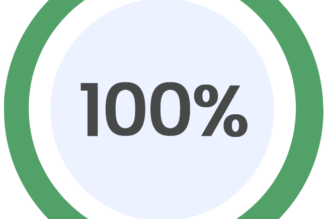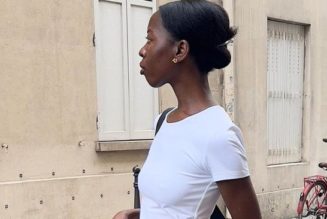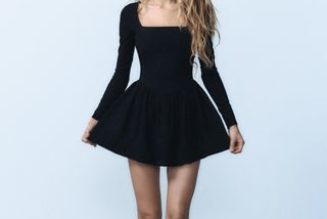
An obvious advantage for luxury brands is that their wealthier customer base can more easily shrug off inflation and other financial pressures.
But online advertising firm Criteo found that many people of lesser means also shop at the high end. Some 70% of high-income shoppers are spending the same or more on luxury goods, but 54% of low- to middle-income shoppers have similar plans, according to the survey. Nearly a third of consumers say they will continue to shop for upscale goods despite price hikes, with half of those in households making more than $100,000 in annual income saying so.
Similarly, researchers at PwC found that more than a quarter of global consumers said they will keep buying luxury and designer goods, with 21% saying they will buy more luxury goods over the next six months.
This insulates luxury players from the volatility in the macroeconomic environment, but only to some extent. Here’s how the major players, many of them conglomerates managing a number of brands, have fared of late.
Capri
Capri’s most recent quarter was more challenging than anticipated, according to a statement from CEO John Idol.
Total revenue fell 6% year over year (or 0.5% adjusting for currency) to $1.51 billion. At Versace, revenue fell 0.8% to $249 million, Jimmy Choo fell 5.6% to $168 million and Michael Kors fell 7.2% to $1.1 billion. Wholesale revenue fell 20%, driven largely by Michael Kors, Idol told analysts during a conference call. Adjusted gross margin expanded to 66.3% from 65.1% a year ago, but operating margin fell to 15.6% from 20.6%. Net income tumbled 30.1% to $225 million.
“[W]e were disappointed with the performance of our global wholesale business in the quarter which resulted in expense deleverage and a lower operating margin,” Idol said.
As its retail partners pull back in the face of consumer uncertainties, especially in North America, Capri’s wholesale trouble remains, according to Wells Fargo analysts led by Ike Boruchow. Longer term though, the conglomerate is in a good position, with Wells Fargo viewing Michael Kors as stabilized and Versace and Jimmy Choo poised to break through.
“Luxury trends are inflecting. As the luxury category continues to improve and positively inflect, we believe investors will begin to place more focus on the Versace and Choo assets in the [Capri] portfolio,” Boruchow said. “Both brands are arguably two of the most well recognized and highly regarded brands in the luxury space and are ideally positioned to capitalize on the outsized growth of the category.”
Tapestry
Results were less fraught at Tapestry, which in its most recent quarter beat expectations, expanded margins and raised its guidance for the full year. Company net sales fell 5% to $2.03 billion (a 2% decline factoring in the strong U.S. dollar), with Coach down 5% to $1.5 billion, Kate Spade down 2% to $490.3 million and Stuart Weitzman down 26% to $85.4 million.
Gross profit shrank 4.8% to $1.39 billion, but gross margin expanded to 68.6% from 68.1% a year ago, thanks in part to lower freight expenses, according to a company press release.
The “beat and raise is unusual in an earnings season that’s been challenged by a weaker wholesale environment and struggles in China,” Bank of America analysts Lorraine Hutchinson and Melanie Nuñez wrote in a client note. “We think [Tapestry’s] business is relatively resilient versus competitors given the low wholesale exposure.”
Ralph Lauren
Despite a cloudy macroeconomic backdrop and ongoing consumer wariness, Ralph Lauren seems to be executing a successful comeback.
In the most recent quarter, net revenue rose 1% to $1.8 billion (7% accounting for the strong dollar), with North America up 1% to $938 million. North America comps rose 2%, with e-commerce up 9% and brick and mortar down 1%, according to a company press release. Adjusted gross margin reached 65.2%, down 80 basis points from last year on a reported basis, but up 80 basis points in constant currency. The year-over-year improvement was “driven by better pricing, product mix elevation and lower air freight expenses compared to the prior year.” Compared to the same period in 2020, adjusted gross margins expanded 300 basis points, thanks to “strong pricing and product elevation,” per the release.
Such claims are well founded, especially for the Polo collection, which is strong and “more in tune with consumer interest,” according to Jane Hali & Associates analysts. “The product is now younger and more versatile,” they said in emailed comments.
In fact, the strength and endurance of Ralph Lauren’s turnaround — the focus on Polo, product elevation, expansion of omnichannel and strong balance sheet — are under-appreciated, according to UBS analysts led by Jay Sole.
“It’s important to note few companies can actually do what [Ralph Lauren] is accomplishing,” Sole said. “In our view, only a handful of Softlines brands have the pricing power, global resonance, and product assortment diversity to deliver returns similar to RL’s.”
Kering
Gucci is Kering’s largest brand, accounting for nearly half its revenue last year, and it’s undermining the French conglomerate’s performance.
“We have reasons to be pleased with the overall performance of all our other houses, apart from Gucci,” CEO François-Henri Pinault said during an earnings presentation Thursday, adding that a turnaround there is the top priority.
It’s possible that things at Gucci will improve under new Creative Director Sabato de Sarno, who is replacing Alessandro Michele, according to Louise Deglise-Favre, apparel analyst at GlobalData.
“Consumers have grown tired of the brand’s maximalist aesthetic,” she said in emailed comments.
In Q4, total sales at the luxury conglomerate fell 2% (7% in constant currency); for the year, revenue rose 15% to top 20 billion euros ($21.3 billion at press time). At Gucci, revenue rose 8% for the full year, but fell 14% in the final quarter. The performance in Western Europe was boosted by tourists spending with their strong dollars.
Comps rose at the company’s other major brands, Yves Saint Laurent (up 23%) and Bottega Veneta (up 11%). At the “Other Houses” segment comps rose 16% for the year, but fell 4% for the quarter. Sales at the end of last year suffered at Balenciaga, amid a backlash against a holiday ad campaign featuring teddy bears with children that disturbed many who saw it as exploitation, Kering executives said. Pinault said the company is contemplating the creation of a position at the group level to be in charge of brand safety but that there are no other plans for personnel changes at Balenciaga.
“The brand … needs to remain very careful and cautious of causing more controversy with its imagery and product lines going forward, with its Trash Pouch released in August 2022 also not well-received,” GlobalData’s Deglise-Favre said.
LVMH
Kering is operating in the shadow of Moët Hennessy Louis Vuitton, according to Deglise-Favre. That Parisian luxury conglomerate, better known as LVMH, said via press release that it’s finding success across brands, categories and geographies. Revenue reached 79.2 billion euros ($84.6 billion at press time) and profit from recurring operations reached 21 billion euros, both increases of 23% from last year. In Q4, revenue rose 9% year over year to $22.7 billion, the company said.
LVMH called out a “remarkable performance” at its fashion and leather goods group, (including Louis Vuitton, Christian Dior, Celine, Fendi, Loro Piana, Loewe and Marc Jacobs), which it said is “gaining market share globally and reaching record levels of revenue and earnings.” The watches and jewelry division also had momentum, “in particular Tiffany, Bulgari and TAG Heuer.”
Louis Vuitton alone topped billion euros in revenue, which was half of its division’s sales, Deglise-Favre noted.
“Louis Vuitton continued to cement its impeccable brand image, reinforcing its association with art through the opening of the LV Dream exhibitions in Paris and New York, in which visitors are taken through an immersive experience where they can admire original artwork and the brand’s collaborations with renowned artists such as Jeff Koons and Yayoi Kusama,” she said. “The conglomerate’s other brands also saw great momentum, especially Celine and Loewe, with their respective runway shows under Heidi Slimane and JW Anderson critically acclaimed and generating lots of excitement on social media.”
The company also noted a “remarkable rebound for Sephora.” That included a record in revenue and profit, which GlobalData’s Deglise-Favre said is related to its expansion via Kohl’s stores in the U.S. and a U.K. website relaunch.
Lanvin
In its first financial report since its December initial public offering via a special purpose acquisition company, Chinese luxury group Lanvin reported preliminary sales results for 2022 that exceeded its own expectations. Revenue for the group rose 38% to 426.4 million euros ($453.9 million at press time), with namesake Lanvin up 67% year over year, Wolford up 16%, St. John up 17%, Sergio Rossi up 116% and Caruso up 25%. Wholesale rose 42% and DTC revenue rose 35%, according to a Friday press release.
The company didn’t detail its income or margin results, but said in its press release that its strategic plan in 2023 will include driving revenue growth and margin improvement. In a presentation accompanying its release, the company also said it is exploring “potential new investment and acquisition opportunities to further complete brand ecosystem and generate synergies.”









